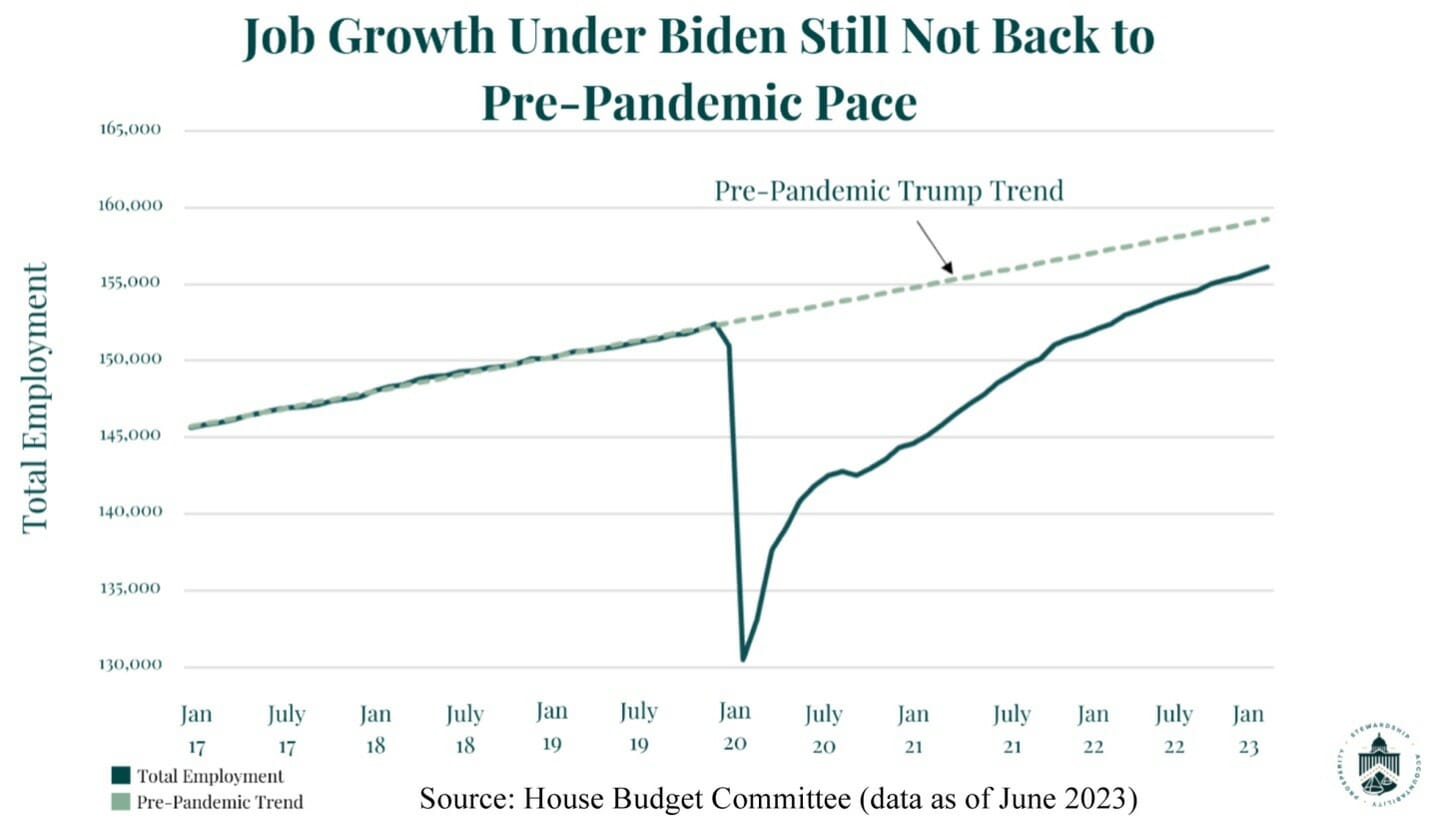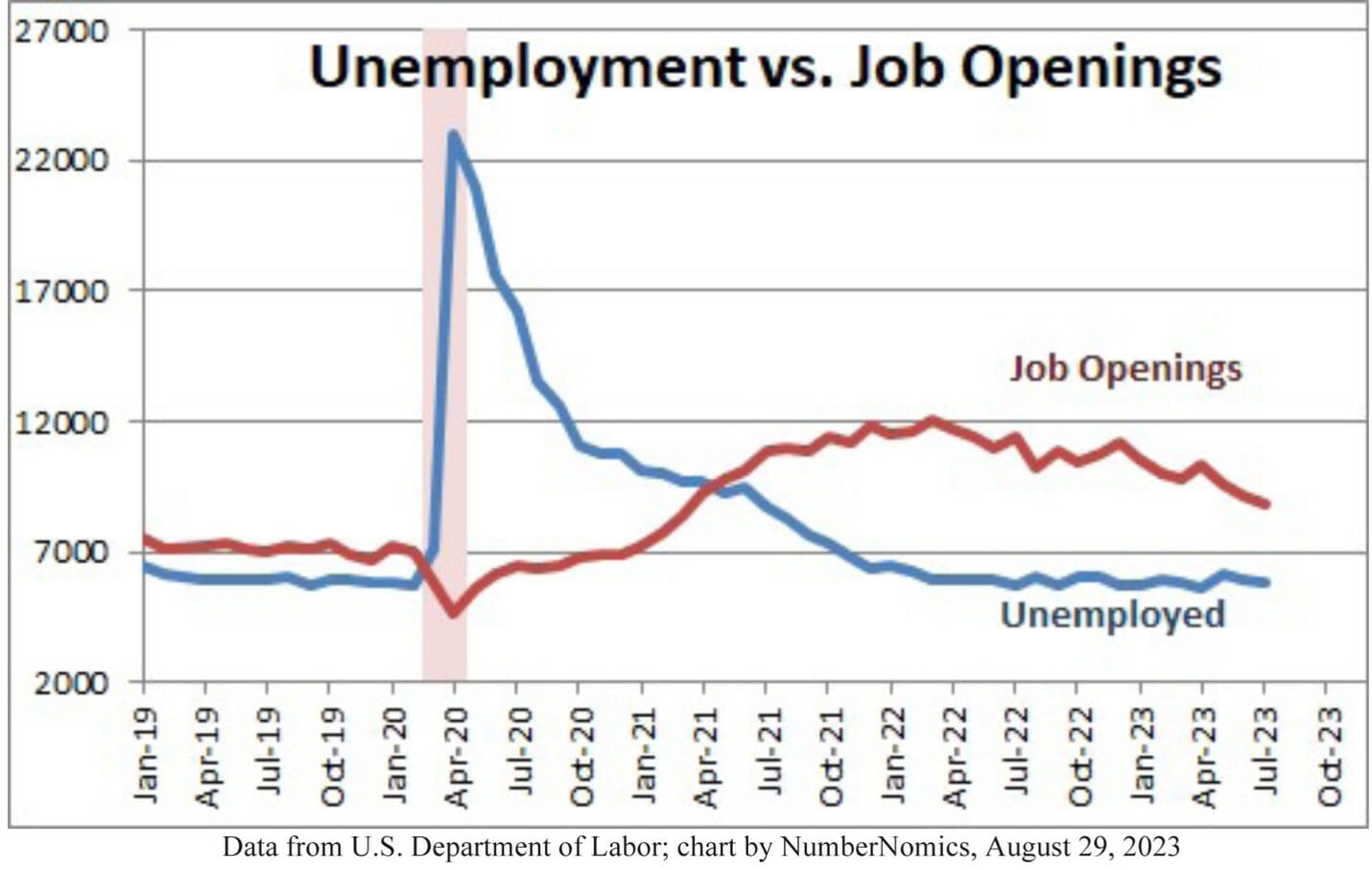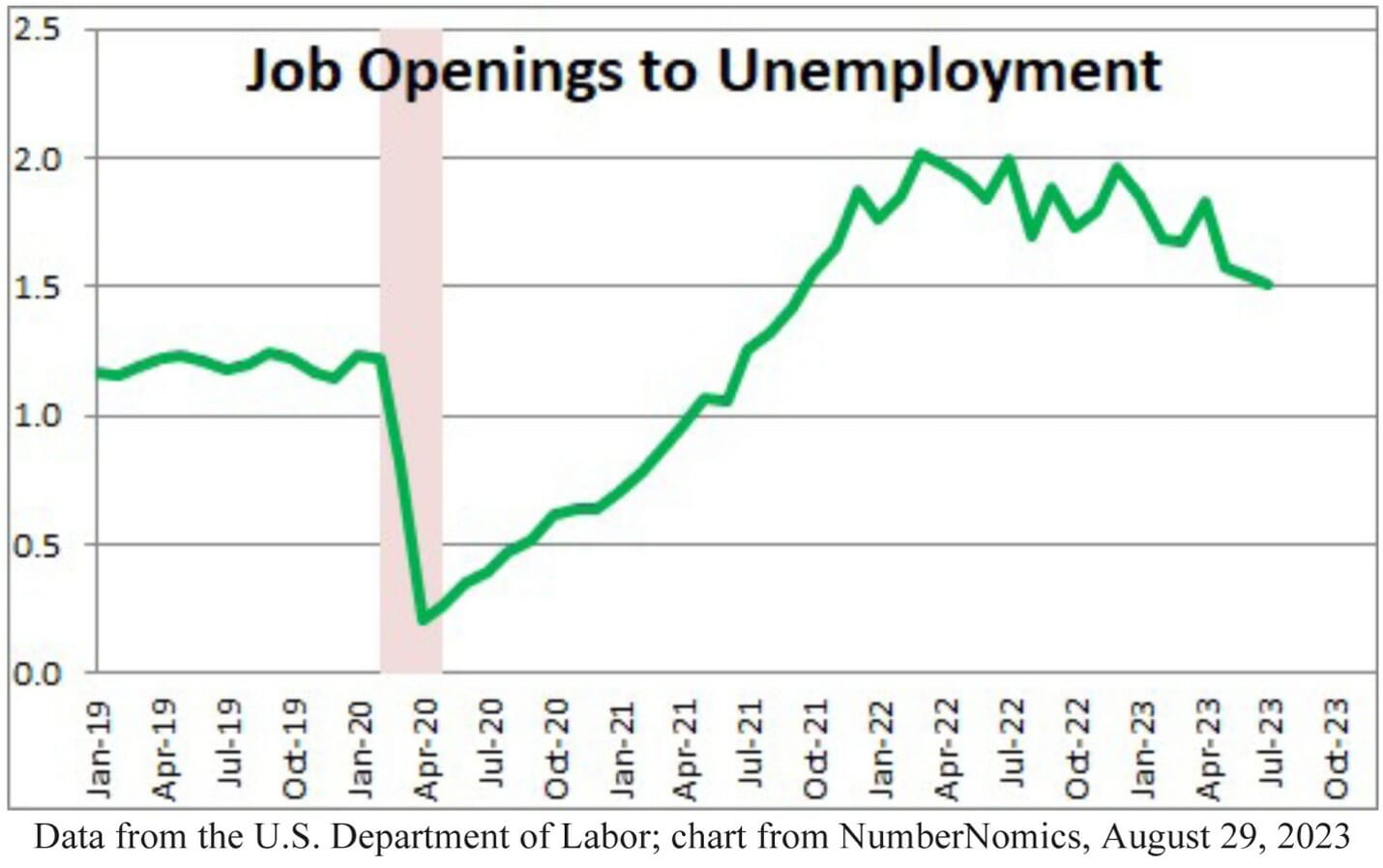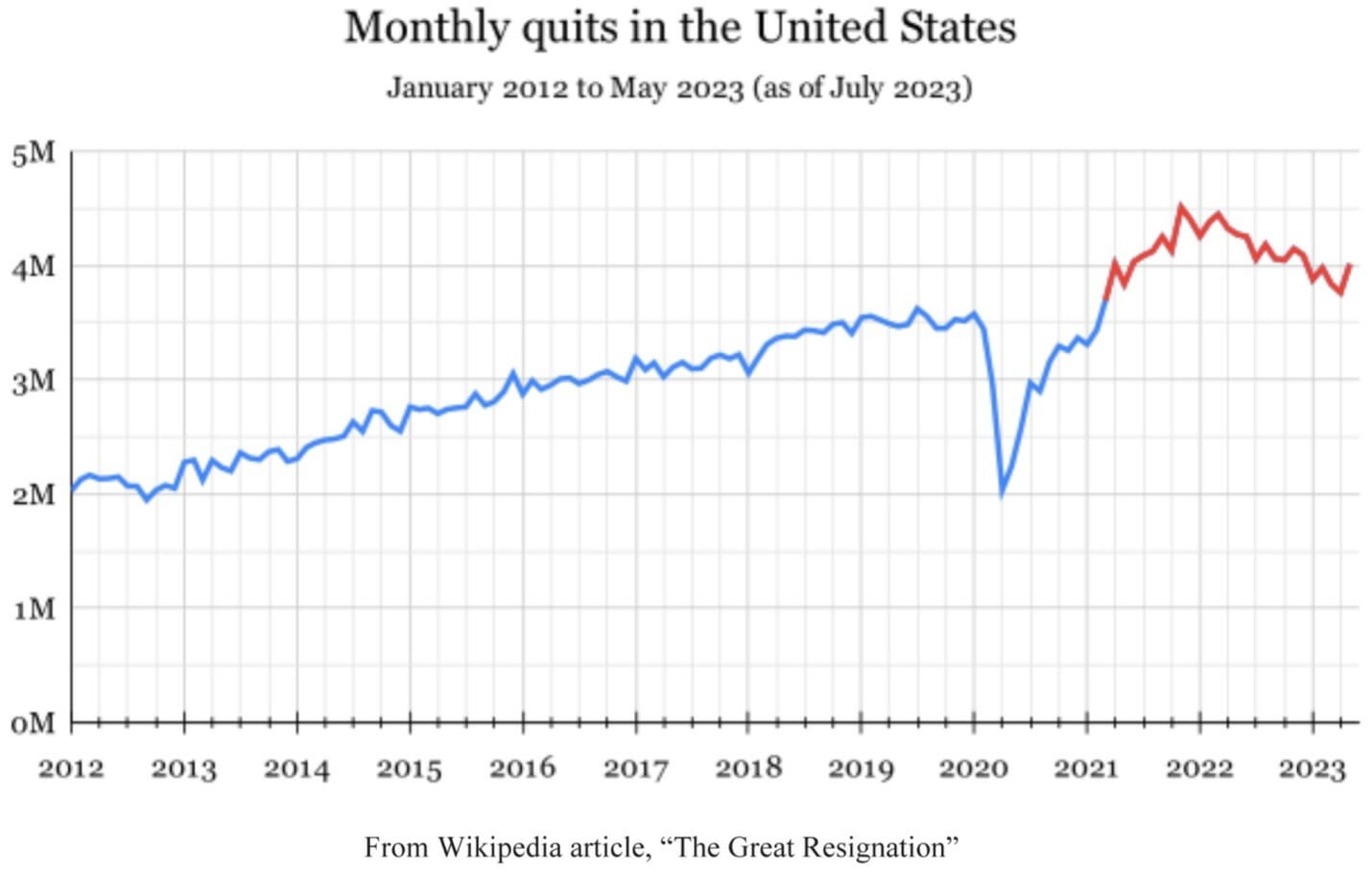Labor Day Report: When Is A Job Not A Job?
For weekend reading, Gary Alexander, senior writer at Navellier & Associates, offers the following commentary:
The August unemployment report was released at 5:30 am (my time) on Friday, September 1. Do we really expect all the bean counters at the U.S. Labor Department to calculate ALL the job changes in the month of August at the crack of dawn on the first day of September? Do companies really report, in a timely manner at the close of business on August 31, about everybody they hired and fired that day, that week?
As a case in point, the original June U.S. Labor Department report on new jobs was 209,000, but the August revision to the June count was ratcheted lower by 50% – to 105,000 – making June the smallest monthly gain since December 2020. What happened to those 104,000 jobs that never existed? If a key data metric can be off by 50% two months later, why report it at all? Why not wait until it is accurate?
What’s even more amazing, ADP reported last Wednesday (August 30) that 177,000 private payroll jobs were created in August – while there were still two days left in August! The media noted that the 177,000 total was “slower than normal.” Well, of course! The month was not yet over. What’s the hurry, everyone?
Upon release of Friday’s downbeat jobs report, President Biden repeated what the Washington Post called a “bottomless Pinocchio,” that “we’ve added 13.5 million new jobs since I took office…. We created more jobs in two years than any president ever created in four years.” But less than a minute later, he told the truth: “We’ve recovered all the jobs lost during the pandemic. We’ve added a million more new jobs!” Amazingly, few press “fact checkers” highlighted the 12.5 “jobs created” gap in the President’s speech.

And not to get too Clintonesque on you, but all this brouhaha over jobs begs the question of what a job is. In these widely watched monthly reports, a “job” can be part-time work, or a temporary fill-in position, or a million-dollar CEO placement. Some jobs are more “sticky” and higher quality than other semi-jobs.
We could resolve these confusing and conflicting numbers by: (1) waiting until the numbers are accurate; (2) measuring only full-time jobs, with part-time jobs measured in fractions; and (3) ignoring algorithms for seasonal adjustments. To be “seasonal,” just compare any given month to the same month a year ago.
Job Openings Still Outnumber Job Seekers by 50%
Job Openings peaked at over 12 million in March 2022. As the economy slowed, those openings dipped to 9.6 million as of June 2023 and then dropped to 8.8 million in July, but that’s still a big world of opportunity, considering available jobs were barely seven million throughout 2019, before COVID struck.

The recent drop in job openings probably reflects slower economic growth and the fact that more former workers are returning to the labor force, perhaps due to their savings running dry. However, as the next chart shows, there are still about 1.5 job openings per unemployed worker. (In 2019, the ratio was 1.2)

Atlas Is Shrugging, But in Slow Motion, and from the Bottom Up
Ayn Rand wrote a novel in 1957 about executives, inventors and entrepreneurs quietly dropping out due to too much state intervention in their businesses and lives, but something like the opposite is happening now, with executives begging for workers, while the mass of post-Covid America is quietly shrugging when offered jobs.
We’ve all seen the “help wanted” signs, and the evidence of closed businesses, slow service, understaffed shops, banks, and restaurants, nationwide. Locally, it’s hard to find workers and now our local county government has chosen Labor Day 2023 to announce adoption of a 32-hour work week.
Here is part of our county’s press release, appearing in our local newspapers last week:
“The workplace of today is not the same workplace that existed even two years ago – retention, work-life balance, compensation, and remote work, are all issues the County, and likely most employers, must find a way to deal with in order to maintain a workforce,” said Mike T____ , County Manager.
The County will continue to provide the same services it does today. The County is taking the bold step of holding wages relatively constant but reducing the work week by eight hours. This effectively gives the employee a sizeable increase in hourly wages.
“Today’s workforce insists on a better work/life balance. No other time in history has the workforce held this much power. The County has been operating with a chronic 10-15% job vacancy rate across many key departments, making it difficult to meet deadlines, avoid employee burnout, and retain institutional knowledge.” – The Islands Sounder, August 29, 2023
The press release promises “the same services” by “reducing the work week” without adding new staff. That, of course, is only possible if the staff were previously goofing off for at least eight hours per week.
Continuing, the release says, “Gen X and Z, are looking for employers that share the same values and who support the whole person – not just the employee. ‘The 32-hour work week is both fiscally responsible and socially responsive. It takes into account a full-time, working islander’s way of life.’”

This has been part of what has been called “The Great Resignation,” of Americans choosing to stay at home, for a variety of reasons. According to SHRM (August 16, 2023), “The Great Resignation’s impact on states is continuing to develop, as ongoing elevated quit-levels have led to increased job openings.”
Forget Jobs: Build a Career
Earlier, I asked, “What is a Job?” since my 11-year-old grandson asked me over the Labor Day weekend why fathers move their families away from home, from city to city, “just to change jobs.” I used that opportunity to explain the difference between jobs and careers.
A job is something to put food on the table and pay the rent, but a career is a passion you follow. Even though my father, like so many in his era, worked for one big firm for 35 years, Boeing’s mission in 1962, moved from defense and airliners to fulfill JFK’s mandate to put a man on the moon, so dad made a jarring move from Seattle to Alabama.
I never wanted to do that to our kids, but I did: My eventual career was in financial newsletters and there were few publishers in that arena, so I made three big moves from 1979 to 1989 when our kids were in school. (Moving from city to city is no longer necessary. I can do the same work from a remote island.)
Early jobs aren’t necessarily careers, but they serve as necessary stepping-stones to learn basic skills. In the 1970s, two books helped me plot a career when I felt trapped in dead-end jobs: “What Color Is Your Parachute?” by Richard Bolles was the most helpful. Bolles asks only three questions: What do you want to do?
Where do you want to do it? and: With whom do you want to do it? The answers flowed freely (to me) from the guidance in that book. Then, to convince company owners I was their man, Carl R. Boll’s “Executive Jobs Unlimited” convinced me that resumes were fodder for wastebaskets, but targeted letters were catnip. Once you meet one influential employer, the rest is reputation and references among peers.
The word “jobs” reminds me of tasks I don’t want to do, like weeding or taking out the trash. Economists treat the word “jobs” like “credit cards” or “TVs” or “phones,” something everyone is supposed to have, but something that is only measured as a means to their end of “full employment.”
It’s no wonder people want to quit or reduce their hours to 32, so they can binge-watch a new series on their 72-inch HDTV. But a career is doing what you want to do each day. In that case, you never have to “work” a day in your life.
I hope my five grandsons find what I found (indeed created…or was gifted) – a career, not just a job.
Navellier & Associates owns Boeing Company (BA), in one client account, per client request in managed accounts. Gary Alexander does not Boeing Company (BA) personally.
Source valuewalk
Boeing Co. Stock
Currently there is a rather positive sentiment for Boeing Co. with 30 Buy predictions and 5 Sell predictions.
With a target price of 233 € there is a positive potential of 48.86% for Boeing Co. compared to the current price of 156.52 €.





